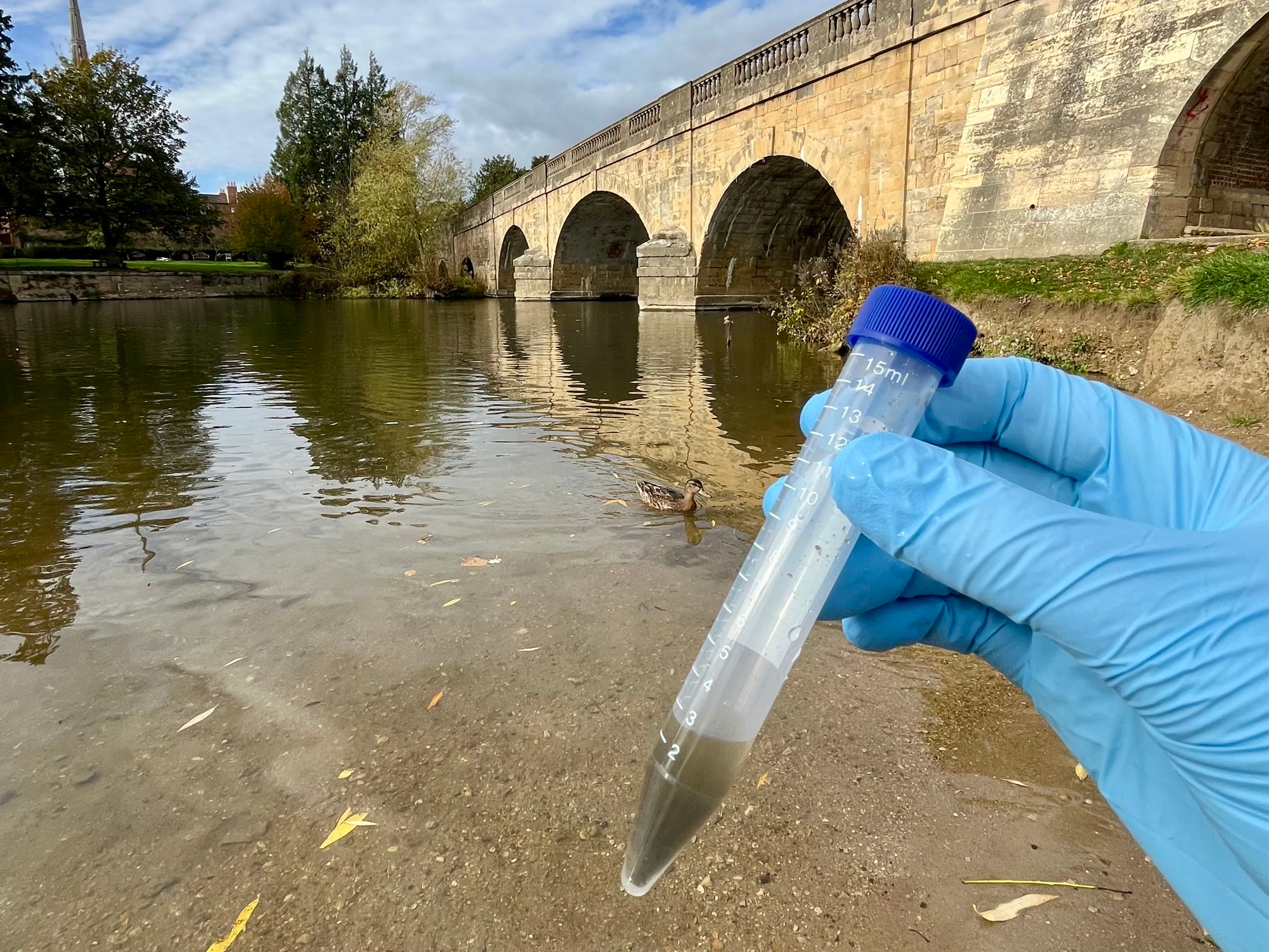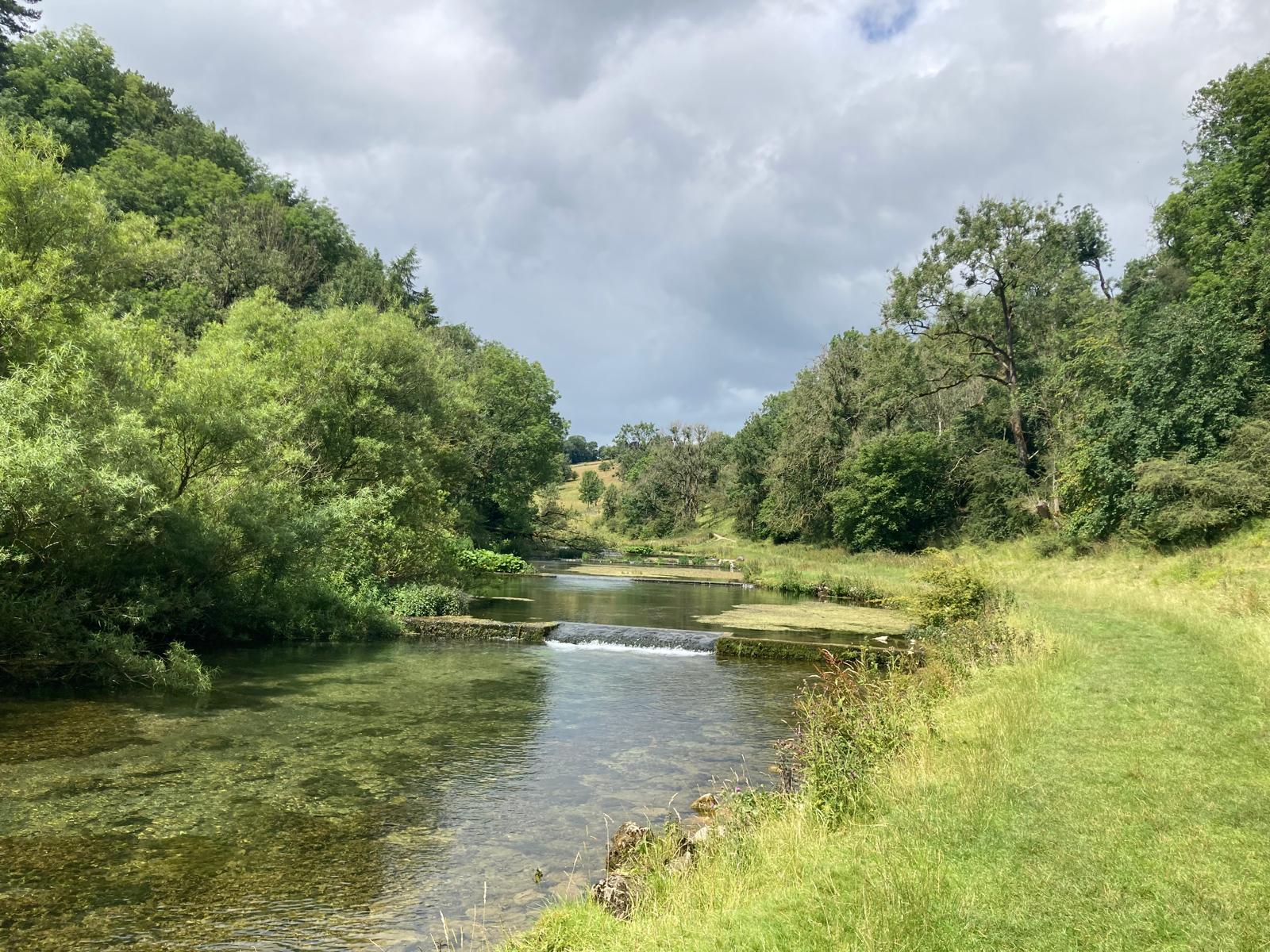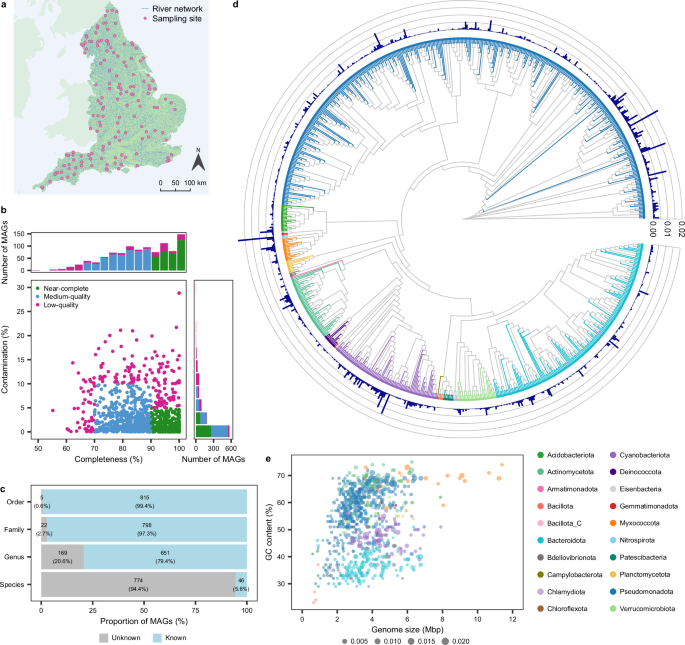Uncovering the hidden microbial life of river biofilms
Published in Microbiology

Spending time in and around rivers, whether walking along their banks, swimming or kayaking, helps many of us feel close to nature. Rivers shape our landscapes, sustain wildlife, provide clean water, and allow us to connect with the natural world. But beneath the surface lies a hidden world working tirelessly to keep them healthy. A living layer of microscopic life known as biofilm - the greenish slime you see on rocks - holds entire ecosystems together.

Rivers offer a tranquil place to unwind and a reminder that life thrives just beneath the surface. Photo by Catherine Thorpe.
Until recently, we knew surprisingly little about who lives in these biofilms or what they do. That is now changing, thanks to advances in environmental DNA (eDNA) and metagenomics. This allows us to read the genetic fingerprints of thousands of microbes from a single sample of river water or biofilm.
Discovering the unseen world
In our latest study at the UK Centre for Ecology & Hydrology (UKCEH), we teamed up with scientists at the Environment Agency (EA) to explore the microbial diversity and ecology of river biofilms across England. The effort was enormous, with over 700 sites sampled, 2,000 DNA extractions, and 450 metagenomes sequenced, generating terabytes of data. Behind every sample were long days in the field, careful lab work, and a dedicated team of researchers and regulators working side by side.

We recovered over 1,000 bacterial genomes, including many never described before, revealing a remarkable diversity of life within river biofilms. These microbes are nature’s engineers, recycling nutrients and breaking down pollutants from farms and cities. Their diversity and adaptability are what keep rivers healthy and resilient.
Bridging science and regulation to make a difference
The real strength of this work lies not only in the science, but in the collaboration it represents. The partnership between UKCEH and the EA brings together scientists applying cutting-edge molecular techniques with expertise in river management and regulation. Together, we are translating DNA data into actionable tools, from early warning systems for ecological stress and microbial indicators of water quality, to new frameworks for ongoing national river surveillance.
Protecting rivers for the future
Rivers across England and around the world face growing pressures from pollution, agriculture, and climate change. By understanding the microbes that are central to freshwater ecosystems, we can better monitor, manage, and conserve these vital waterways, ensuring that future generations can continue to enjoy healthy, living rivers.

Protecting rivers requires an understanding of the 'microbial engineers' that keep these ecosystems functioning. Photo by Catherine Thorpe.
This research is shaping a new era of river monitoring, one that captures not only visible changes, but also the hidden microbial processes that sustain freshwater ecosystem health and resilience.
To learn more, read our open access paper, National-scale biogeography and function of river and stream bacterial biofilm communities, published in Nature Communications.
Follow the Topic
-
Nature Communications

An open access, multidisciplinary journal dedicated to publishing high-quality research in all areas of the biological, health, physical, chemical and Earth sciences.
Related Collections
With Collections, you can get published faster and increase your visibility.
Women's Health
Publishing Model: Hybrid
Deadline: Ongoing
Advances in neurodegenerative diseases
Publishing Model: Hybrid
Deadline: Dec 24, 2025




Please sign in or register for FREE
If you are a registered user on Research Communities by Springer Nature, please sign in